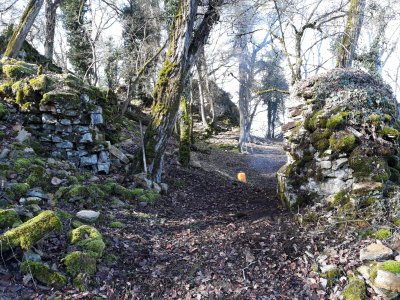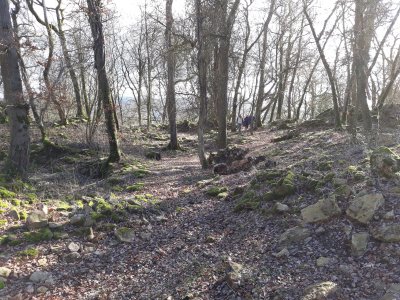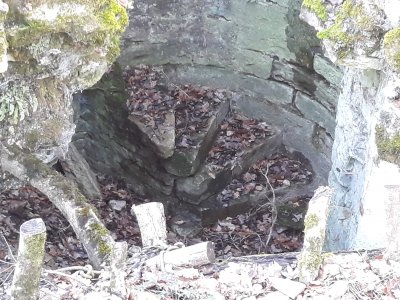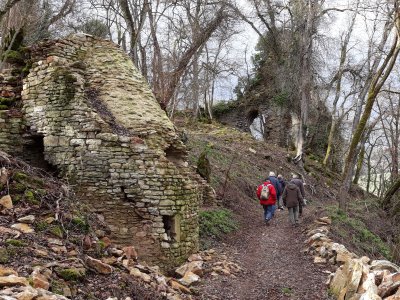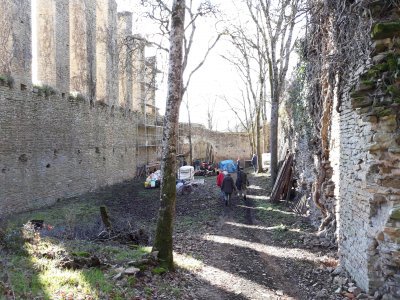Le château
Sadly no records, drawings or plans exist of the chateau before it was destroyed by mines in 1632. All that we know is what has been pieced together by archaeologist and Professor Herve Mouillebouche and the enthusiasts from the Centre de Castelologie de Bourgogne and historians from previous generations..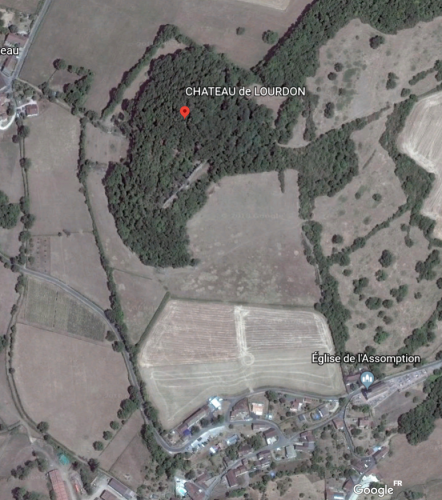
Nonetheless, the surviving stones and ruins have told their own story and, from that, the archaeologists have been able to piece together the essentials of the site. Their detailed research and measurements present a chateau that dominated the hillside and, at one time, was one of the largest in France with a tour Philippien that soared up into the sky and was visible for kilometres around.
The protective walls of the chateau itself measured 100 metres by 70 metres and they in turn were protected by further outer walls, the last of which stretched halfway down the hillside and right the way around it. The fortifications were at the centre of a 3.2 hectare walled park protected by at least a further 12 towers..
Outside the main walls of the chateau, which themselves were up to three metres thick, but still within the main gate, stood the imposing house of the abbe, one wall of which still stands proudly today nearly 400 years after the immense explosions which rocked the site and destroyed the fortifications.
Nestling alongside the main gate but well away from the main buildings stood the powder tour which stored the gunpowder used for the defences.
The chateau still has many secrets to give up. The remains of two of the towers still have circular staircases spiralling down into the ground. While it is not yet known where they go, a group of speliologues from Macon are known to have toured the chateau’s caves some 50 years ago. Sadly no records remain of the visit and the entrance has been covered over.
The chateau’s well, capped in the 1600s, remains hidden but its location has been confirmed by two sources – a sourcier and nature. Last winter, when snow covered the site, a bare ring in the ground confirmed the sourcier’s find.
Over the centuries the chateau was damaged, destroyed, rebuilt and added to. The most important additions were the jeu de paume and les ecuries.
